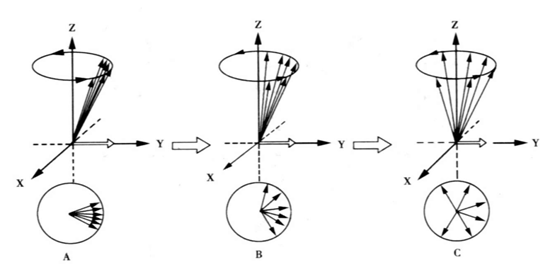Introduction
Low Field Nuclear Magnetic Resonance (LF-NMR) has become an indispensable technology in the analytical toolbox for various industries. It provides a non-invasive method to study the properties of materials at the molecular level. This article offers an in-depth look into Low Field NMR technology, its principles, and its wide-ranging applications.

Understanding Low Field NMR
Nuclear Magnetic Resonance is a phenomenon where atomic nuclei in a magnetic field absorb and re-emit electromagnetic radiation. Low Field NMR operates at a lower magnetic field strength compared to high field NMR, which offers its own unique advantages.
In Low Field NMR, nuclei such as hydrogen (1H) or carbon (13C) are exposed to a magnetic field, tipping their spin states. When a radiofrequency pulse is applied, these nuclei absorb energy, and upon returning to their equilibrium, they emit signals that are detected and analyzed.

Key Benefits of Low Field NMR
– Non-Destructive: Samples remain unaltered after analysis, making Low Field NMR ideal for quality control.
– Cost-Effective: Requires less expensive equipment and maintenance compared to high field NMR.
– Penetration: Better penetration capabilities allow analysis of samples in their natural state or within larger structures.
– Safety: Operates at lower magnetic fields, reducing safety concerns and costs associated with high field systems.
Applications of Low Field NMR
1. Material Science: Analyzing polymers, gels, and other materials to determine molecular structure, mobility, and relaxation times.
2. Food Industry: Assessing the quality of food products, such as fat content in dairy products or water content in meats.
3. Pharmaceuticals: Characterizing drug substances for polymorphism, stability, and dissolution rates.
4. Petroleum Industry: Investigating the properties of oils, waxes, and asphaltenes to optimize extraction and refining processes.
5. Agriculture: Evaluating the moisture content in grains and the quality of agricultural products.

Low Field NMR in Research and Development
Low Field NMR is a valuable tool in R&D for its ability to provide rapid, qualitative, and quantitative analysis. It aids in the development of new materials, optimization of processes, and understanding the mechanisms behind various phenomena.

Future Outlook
As technology advances, Low Field NMR is expected to play an even more significant role in analytical science. With improvements in hardware and software, the applications of Low Field NMR are set to expand, offering faster and more accurate analyses.
Conclusion
Low Field NMR technology stands as a robust and versatile analytical method with a wide array of applications. Its non-destructive nature, cost-effectiveness, and versatility make it an attractive option for many industries. As research continues to push the boundaries of what is possible with NMR, Low Field NMR is poised to become an even more powerful tool in the analytical scientist’s arsenal.
 NIUMAG
NIUMAG